International
Mexican President delivers fifth government management report
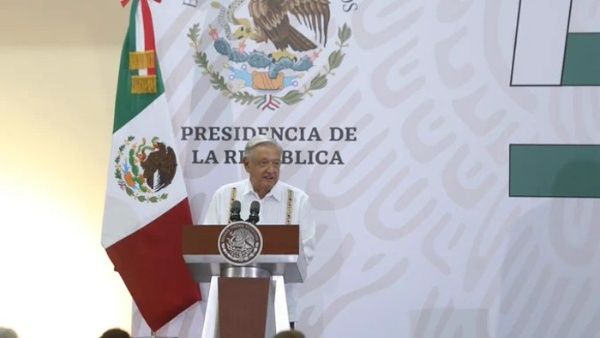
September 1|
As mandated by the Constitution, Mexican President Andrés Manuel López Obrador presents this Friday a report on his actions for the year, the progress made by his government, as well as his future projects.
As a novelty this year, the president did not go to the Palace of San Lazaro (seat of the Legislative) to present it, but rather from Campeche, where as part of the advances in the Mayan Train project, Lopez Obrador will get on this means of transportation for the first time, in order to supervise the carriage that arrived to the southeast this month.
Since it is one of the emblematic works of his government, he intends his message to be significant by giving it from Campeche.
.
According to the president, he decided “to deliver this report from Campeche because it is one of the towns and states that have contributed the most to national development”.
López Obrador emphasized that the key to Mexico’s economic growth was not allowing corruption, as well as the increase in the minimum wage and the sending of remittances from Mexicans abroad.
In this sense, he pointed out: “The key is not to allow corruption, it seems something elementary and even simple, but progress with justice in our country depends on it, nothing had damaged Mexico more than the dishonesty of the rulers, that is what the government’s success has consisted of”.
He also pointed out that the policy of Mexican humanism is effective and highlighted the increase in the minimum wage.
He also stated that “it is false that if those at the top do well, those at the bottom will necessarily do well”. He said, in this sense, that “our alternative project is based on the opposite in attending to the base of the social pyramid and this is what is generating better income for families”.
According to the president, Mexico is the country with the third lowest unemployment in the world and the economy increased 3 percent since the last report, a year ago.
López Obrador highlighted that now young people who were previously classified as “ninis” were not offered the possibility of working, but with social programs, they are now allowed to become apprentices in workshops, restaurants, companies and other activities.
In this sense, he pointed out that “While they are being trained, they receive the equivalent of a minimum wage, plus medical service in the social security system. As of today, 2,643,000 boys and girls have been trained (…) Do you know how much has been invested since we arrived until today, only in this program, 14 times more than all that was destined to young people in the six previous six-year terms”.
Regarding the judicial reform he has proposed and which he announced he will soon present, the President argued: “It is indispensable and urgent that judges, magistrates and ministers be directly elected by the people and not appointed by the elite of Mexico’s economic and political power”.
Further on, he praised the work of educators and pointed out that “The more the economy grows and salaries increase in general, teachers’ salaries must also increase” and regarding health, particularly the supply of medicines, he announced that “In two or three more months we will have a pharmacy where all the medicines in the world will be kept, there will be no shortage of them”.
In relation to the controversy over the new textbooks, the president said “They have scientific foundations and a humanist dimension” and thanked that the majority, “30 out of 32 governors, governors, supported the decision to deliver the free textbooks”.
He ratified that “the Mayan Train will be inaugurated in December, there will be 20 stations, 14 stops, towns will be connected, passengers and national and foreign tourists will be transported quickly through five states”.
International
Cardinals seek a “unifier” as they prepare for conclave to elect new pope

Several cardinals who will participate in the conclave to elect Pope Francis’ successor said they are approaching the mission with “apprehension,” “responsibility,” and “hope,” while also beginning to outline the profile of the next pope: a “unifier.”
The 12-year pontificate of the first Latin American pope was marked by reforms and a simple style, which earned him strong opposition from the Church’s most conservative sectors, with his predecessor Benedict XVI as a symbol of that resistance.
“The task before us these days is greater than us, and yet it is a duty we must fulfill,” summarized French Cardinal Jean-Marc Aveline during a mass in Rome on Thursday evening.
A few meters away, Luxembourg Cardinal Jean-Claude Hollerich admitted to journalists that he approaches the conclave “with a certain apprehension,” but also with “great hope.”
“We feel very small. We must make decisions for the entire Church, so please pray for us,” added the Jesuit cardinal, who was a close advisor to the Argentine pontiff.
He estimated that the conclave would “probably” begin on May 5 or 6, after the nine-day mourning period at the Vatican known as the Novendiales.
International
Trump and Zelensky hold “very productive” meeting in Rome during Pope’s funeral
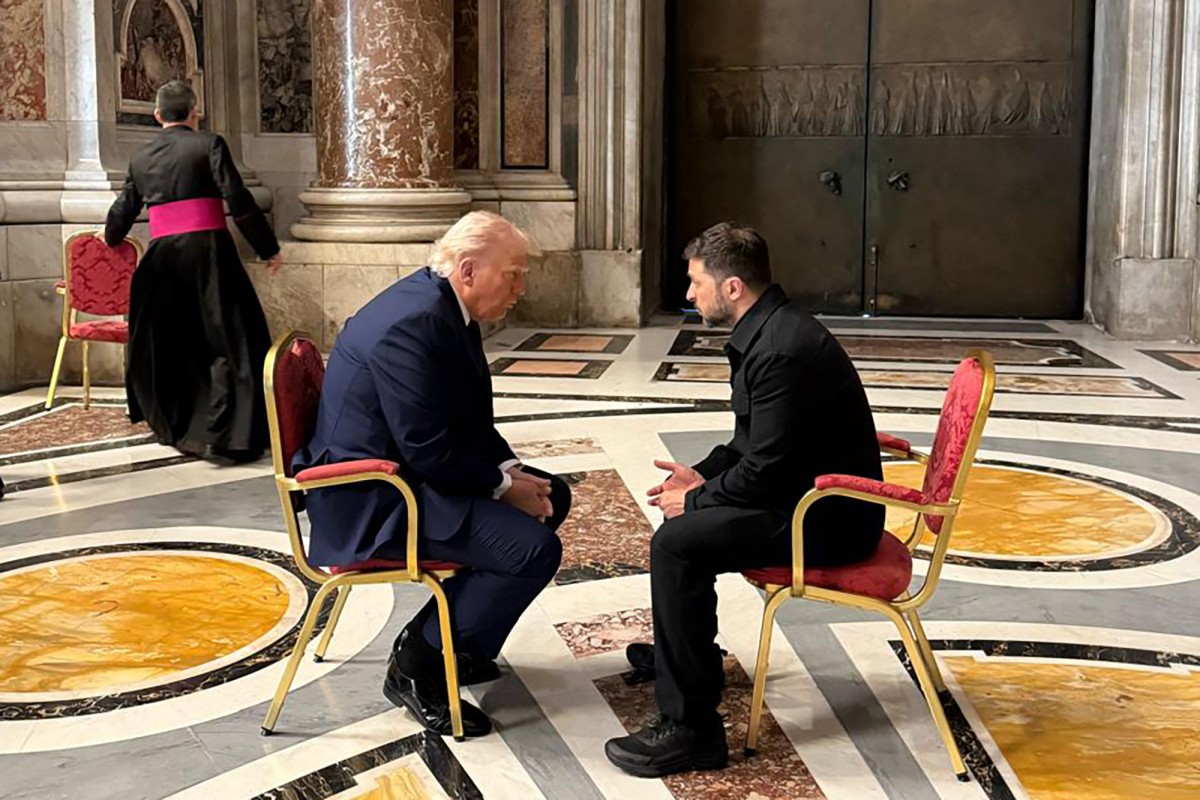
Donald Trump and Volodymyr Zelensky held a “very productive” meeting, according to the White House, this Saturday in Rome on the sidelines of Pope Francis’ funeral.
No specific details about their conversation were disclosed, but the White House promised to release more information later. Zelensky’s chief of staff, Andrii Yermak, described the 15-minute discussion at St. Peter’s Basilica as “constructive.”
This was the first meeting between the U.S. and Ukrainian presidents since their heated exchange in Washington on February 28, when Trump and his Vice President JD Vance verbally confronted Zelensky in the Oval Office.
Dozens of heads of state, government leaders, and senior officials gathered in Rome on Saturday for Pope Francis’ funeral, creating opportunities for multiple diplomatic meetings.
The Ukrainian presidency stated that Trump and Zelensky “agreed to continue” their talks later Saturday in the Italian capital and shared photos of both leaders seated face-to-face, also engaging in conversation with French President Emmanuel Macron and British Prime Minister Keir Starmer.
The U.S. president said on Friday that a deal between Ukraine and Russia is “very close,” without providing details, following discussions between his envoy Steve Witkoff and Vladimir Putin in Moscow about the possibility of launching “direct negotiations” between the two sides.
International
A magnitude 6 earthquake shakes the province of Esmeraldas in Ecuador, bordering Colombia
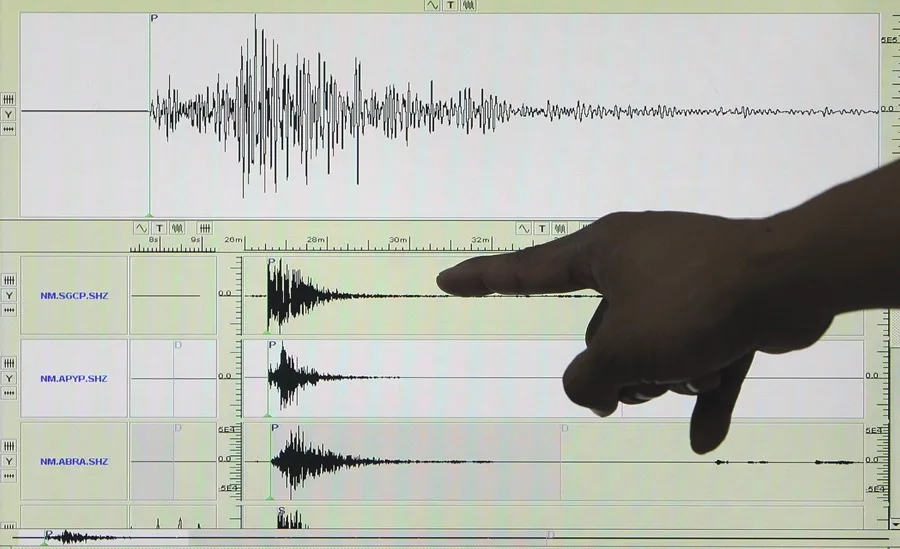
A magnitude 6 earthquake was recorded this Friday in the coastal province of Esmeraldas, bordering Colombia, causing damage to several infrastructures and leaving, so far, 20 people injured.
According to the Geophysical Institute of the National Polytechnic School, the earthquake occurred at 06:44 local time (11:44 GMT) at 1.03 degrees south latitude and 79.69 degrees west longitude.
According to the source, the tremor occurred at a depth of 30 kilometers and 9.31 kilometers from Esmeraldas, capital of the homonymous province.
According to the National Secretariat of Risk Management (SNGR), the affected people had head injuries and bruises.
While the SNGR continues with the verification of affectations, it indicated that 80% of the electricity service and 80% of the telecommunications that were affected, are gradually restored.
Among the affected public buildings are the ECU 911 due to a fall of masonry; the Vargas Torres University, which has cracks; the Los Militares building where the front collapsed and the Prefecture building, among others.
The SNGR reported that the earthquake was felt with strong intensity in seven municipalities of the province of Esmeraldas and moderately in the provinces of Guayas and Manabí, while mildly in Carchi, Cotopaxi, Imbabura, Los Ríos, Pichincha, Santo Domingo de los Tsáchilas and Tungurahua.
About twenty minutes after the earthquake in Esmeraldas, one of magnitude 4.1 was reported in the coastal province of Guayas, located in the southeast of the country, without damage or victims having been reported so far.
The President of Ecuador, Daniel Noboa, ordered the displacement of all his ministers to Esmeraldas, in order to coordinate actions after the magnitude 6 earthquake recorded this Friday.
“I have arranged for the immediate deployment of all ministers in the province of Esmeraldas to coordinate the installation of shelters, delivery of humanitarian aid kits and assistance in everything our people need,” Noboa wrote on his social network account X.
The province of Esmeraldas was one of the most affected by the 7.8 magnitude earthquake recorded on April 16, 2016, which left more than 670 dead, thousands affected, as well as millions of material losses.
This earthquake also hit the province of Manabí, located, like Esmeraldas, on the coast of the Andean country, but also affected other areas and was felt strongly, even in the Ecuadorian capital.
Ecuador is located in the Pacific Ring of Fire or Belt, which concentrates some of the most important subduction areas (sinking of tectonic plates) in the world and is the scene of strong seismic activity.
In addition to Ecuador, the Horseshoe-shaped Belt comprises a large number of countries such as Chile, Argentina, Bolivia, Peru, Colombia, Panama, Costa Rica, Nicaragua, El Salvador, Honduras, Guatemala, Mexico, the United States and Canada.
-

 Central America5 days ago
Central America5 days agoCardinal Rodríguez to Attend Funeral of Pope Francis: “He Was Very Dear to Me”
-

 Central America5 days ago
Central America5 days agoNicaragua’s Ortega and Murillo Mourn Pope Francis, Acknowledge ‘Difficult’ Relationship
-

 International5 days ago
International5 days agoDominican Republic Declares Three Days of Mourning for Pope Francis
-

 International4 days ago
International4 days agoPope Francis and Trump, a relationship of disagreements marked by migration
-

 International5 days ago
International5 days agoDHS Secretary Kristi Noem’s Purse Stolen in D.C. Restaurant Heist
-

 International3 days ago
International3 days agoFrom the transfer of the coffin to the funeral, three days to say goodbye to Pope Francis
-

 International4 days ago
International4 days agoWithin Francis’ private wake: respect and prayer for the deceased pope
-

 International5 days ago
International5 days agoPope Francis: The Quiet Architect Behind the U.S.-Cuba Thaw
-

 International3 days ago
International3 days agoEl Salvador formalizes the proposal for the exchange of Venezuelan deportees, according to Bukele
-

 International4 days ago
International4 days agoTrump’s emissary will visit Russia this week for consultations on the arrangement in Ukraine
-

 International3 days ago
International3 days agoA very heterogeneous and divided conclave will elect the new pope
-

 International4 days ago
International4 days agoCardinal Becciu’s enigma: will he enter the conclave?
-

 International3 days ago
International3 days agoModi returns to India and shortens his visit to Saudi Arabia after a deadly attack in Kashmir
-

 International4 days ago
International4 days agoThe pope last called the Gaza parish on Saturday and asked about the children
-

 International4 days ago
International4 days agoA candidate for the Supreme Court denounces an unequal dispute in the judicial election of Mexico
-

 International4 days ago
International4 days agoAmerican universities and colleges sign a letter against Trump’s policy
-

 International4 days ago
International4 days agoThe Government of Colombia presents twelve questions that it will propose in a popular consultation to promote its reforms
-
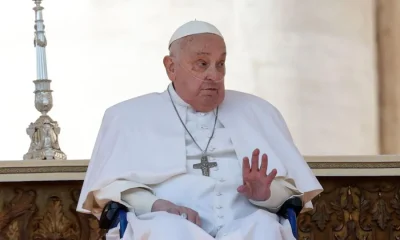
 International24 hours ago
International24 hours ago“A dignified life” for migrants, the plea in Panama in memory of Pope Francis
-

 International4 days ago
International4 days agoBurma’s military junta extends ceasefire until April 30 due to the earthquake
-
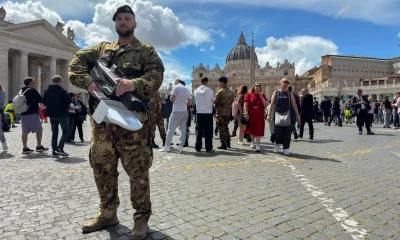
 International2 days ago
International2 days agoThe Pope’s funeral procession through the center of Rome worries the Italian authorities
-
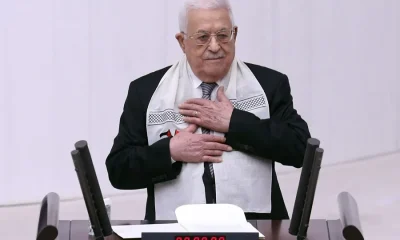
 International2 days ago
International2 days agoThe Arab League supports Hamas handing over control of Gaza and weapons to the Palestinian Authority
-

 International3 days ago
International3 days agoThe Peruvian Public Ministry denounces the former attorney general for an alleged corruption case
-

 International3 days ago
International3 days agoMaradona’s house arrest is again a focus of tension in the trial for his death
-

 International4 days ago
International4 days agoInternational leaders begin to confirm their presence at Pope Francis’ funeral
-
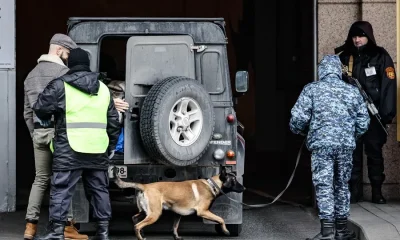
 International24 hours ago
International24 hours agoA Russian general dies in the explosion of a car bomb near Moscow
-

 International4 days ago
International4 days agoRoyal quinoa, the superfood that grows in front of the largest salt flat in the world in Bolivia
-

 International3 days ago
International3 days agoA judge orders the Trump Government to restore Voice of America services
-

 International3 days ago
International3 days agoDonald Trump will visit Saudi Arabia, Qatar and the United Arab Emirates in mid-May
-

 International4 days ago
International4 days agoChurch charges ceased or resigned in the papacy of Francis for cases of pedophilia
-
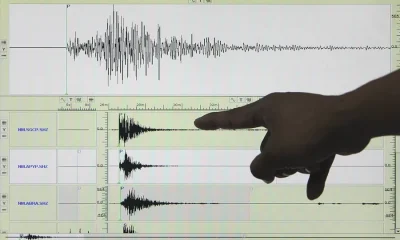
 International24 hours ago
International24 hours agoA magnitude 6 earthquake shakes the province of Esmeraldas in Ecuador, bordering Colombia
-
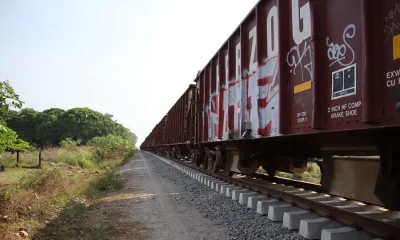
 International2 days ago
International2 days agoMigrants want to stay on Mexico’s southern border because of Sheinbaum’s industrial plan
-

 International3 days ago
International3 days agoThe president of the World Bank underlines his intention to lift his veto on nuclear energy
-
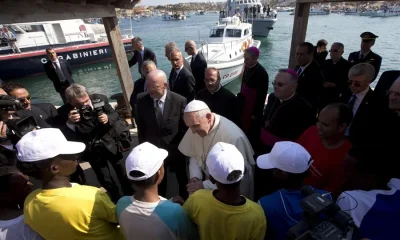
 International2 days ago
International2 days agoA group of the poor and a delegation of migrants will participate in the funeral and burial of the pope on Saturday
-
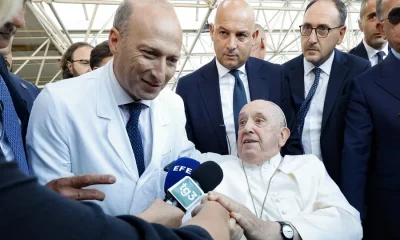
 International2 days ago
International2 days agoThe pope’s doctor reveals his last moments of life and that he wanted to “die at home”
-

 International3 days ago
International3 days agoMarco Rubio reorganizes the State Department to eliminate offices and jobs
-
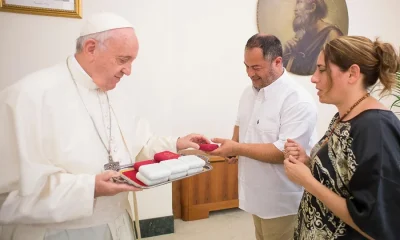
 International2 days ago
International2 days agoFrom email to marriage: the day Pope Francis married a Uruguayan couple
-

 International24 hours ago
International24 hours agoPutin and Witkoff address possible direct negotiations between Russia and Ukraine
-
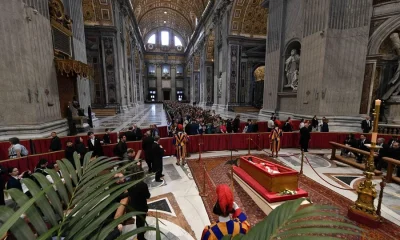
 International24 hours ago
International24 hours agoPope Francis’ funeral procession will be a six-kilometer journey through the heart of Rome
-

 International3 days ago
International3 days agoThe Brazilian Supreme Court opens trial against six others accused of leading the coup attempt
-
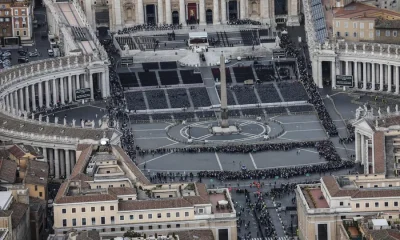
 International24 hours ago
International24 hours agoPreparations for Pope Francis’ funeral, in figures

















